The Box and Goodies -
Phones these days do not come with much (never have really). The boxes are usually just big enough to drop the phone and a few odds and ends. Sometimes the boxes can be nice looking. I know that I have always liked the iPhone boxes for their style. The EVO 3D came in a box that was plain white and made of what looked like recycled cardboard. On the top of the box the words EVO 3D was embossed and HTC has added a slight shadow to the box to make this more visible.
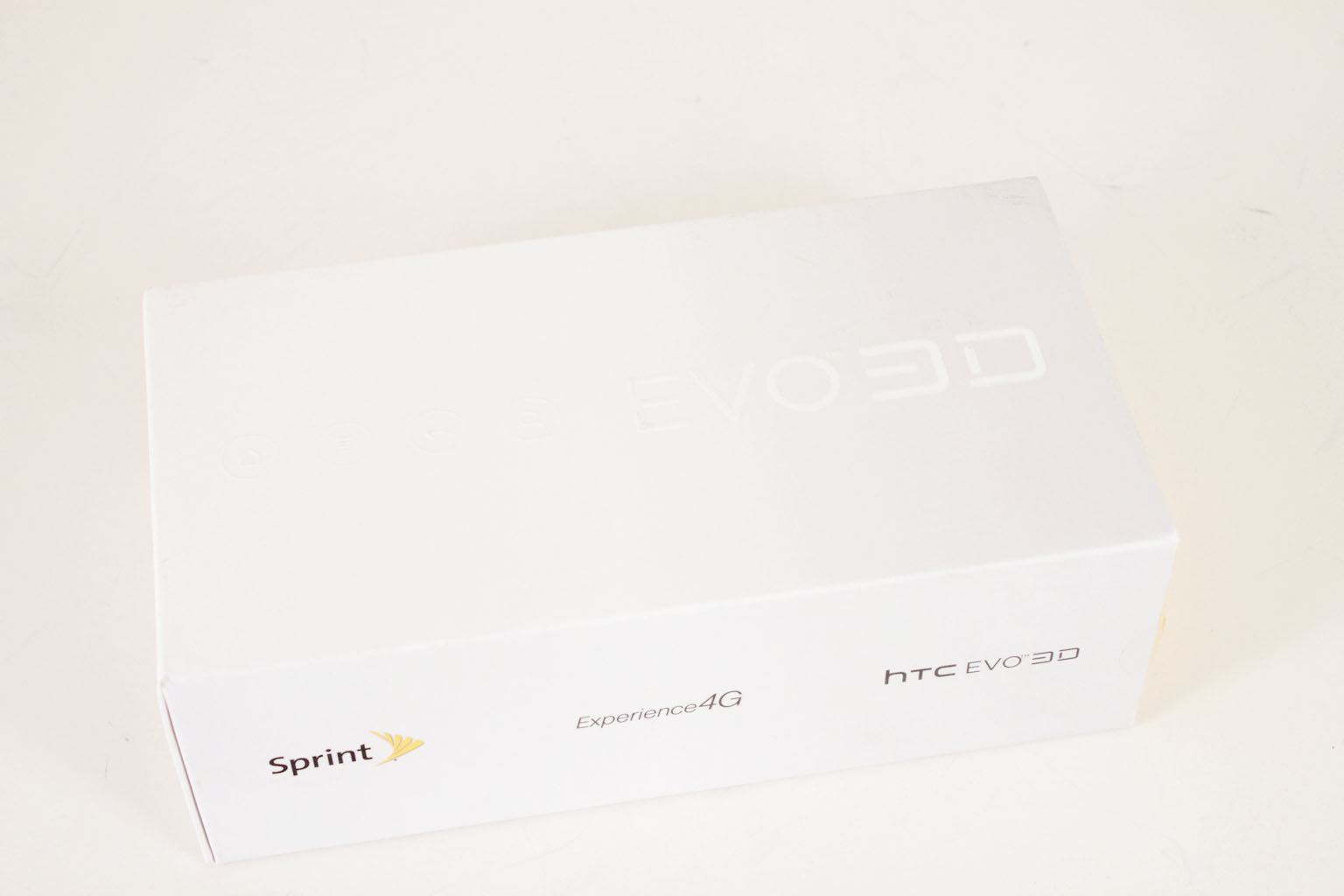 |
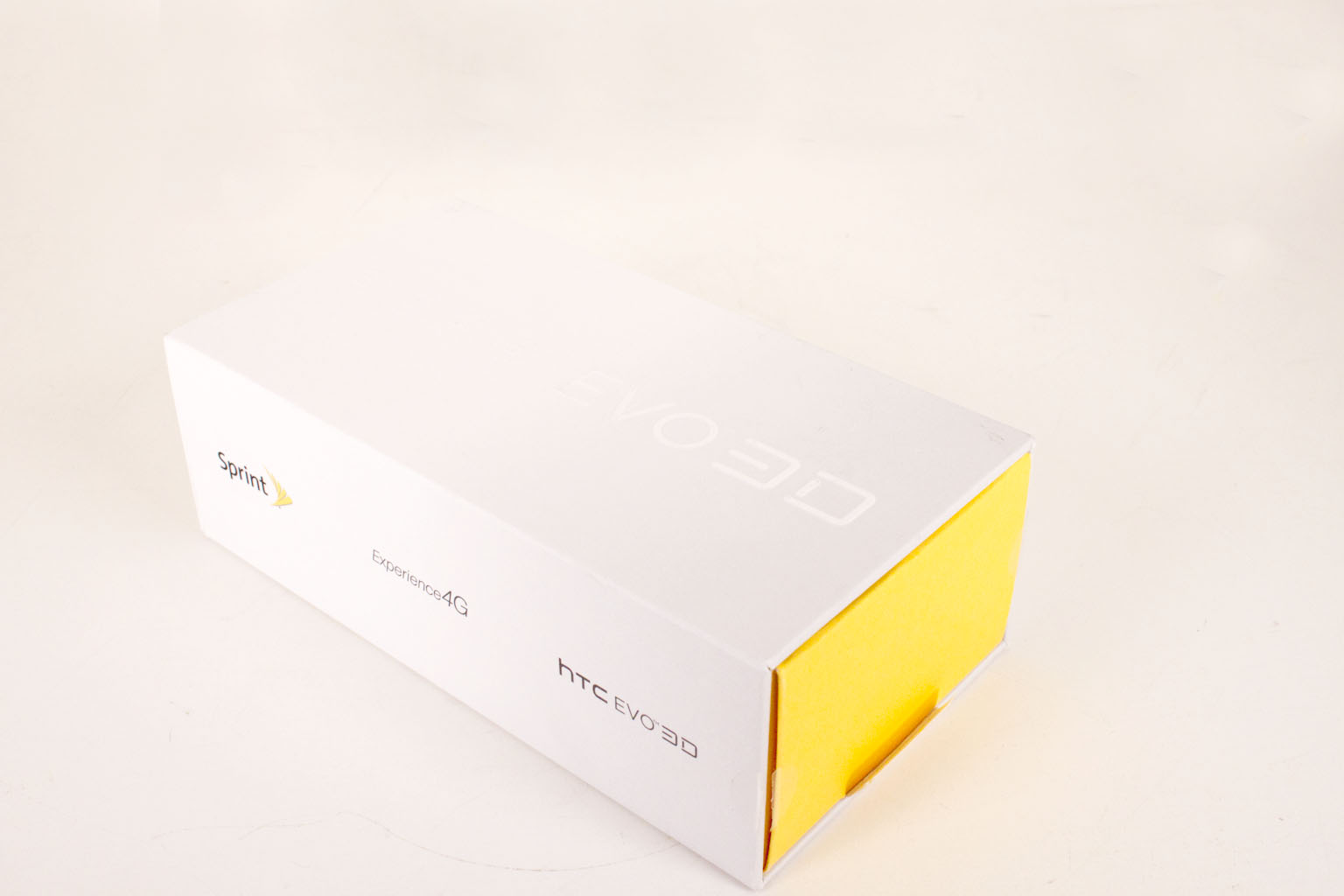 |
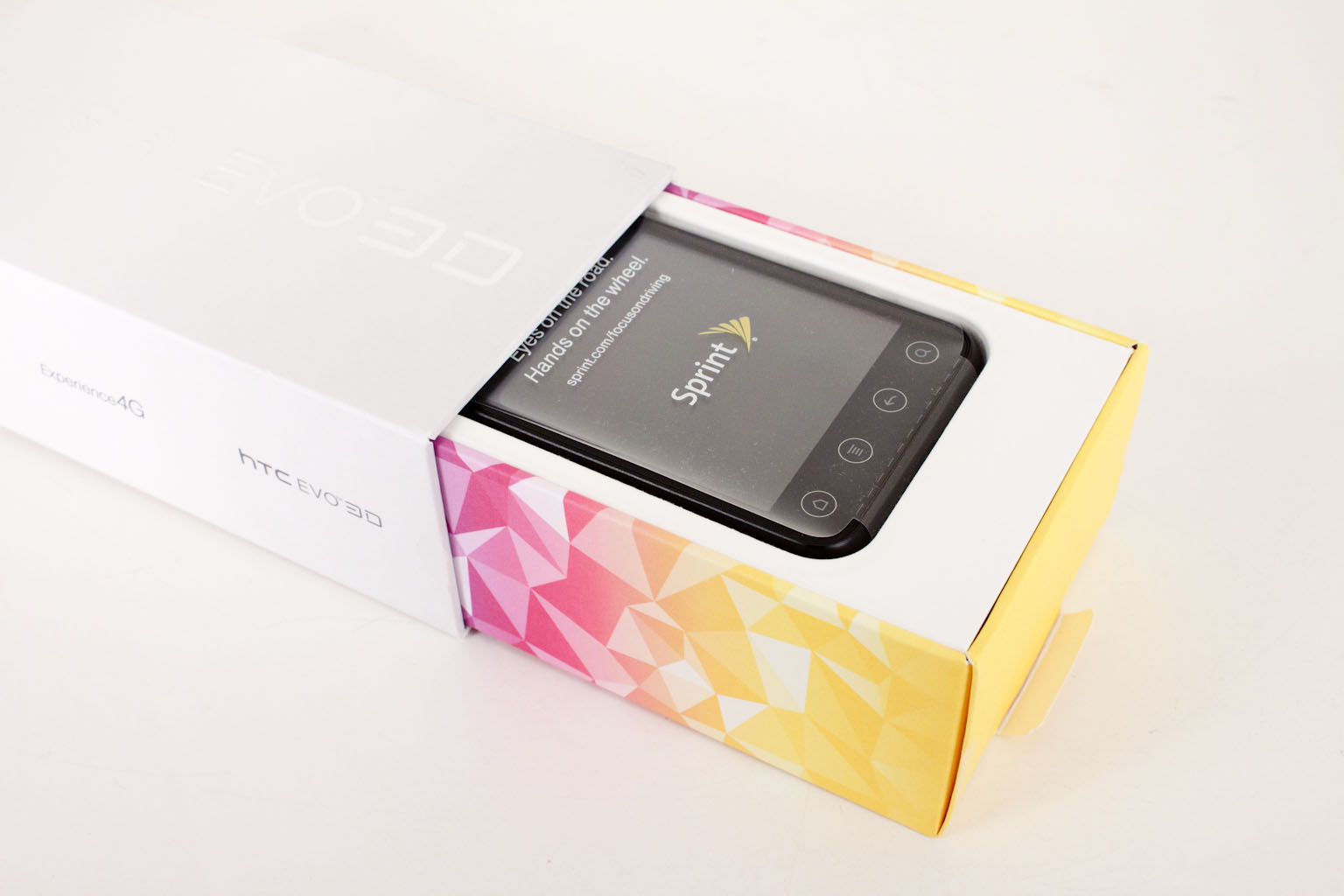 |
This part of the box is nothing more than an outer shell though. The important and fun stuff is on the inside in a much more colorful package. Once you slide this out you will find the EVO 3D sitting right on top. HTC and Sprint have wrapped it in a protective cover that is intended to keep the phone safe and clean, but also happens to have an advertisement for Telenav a navigation add-on that also costs money to use. After we pulled out the EVO 3D and dumped out the boxes contents we found a bag with manuals (in multiple languages) a wall adapter and a USB cable that doubles as a charging cable and a data cable (for the HTC sync if you install that).
 |
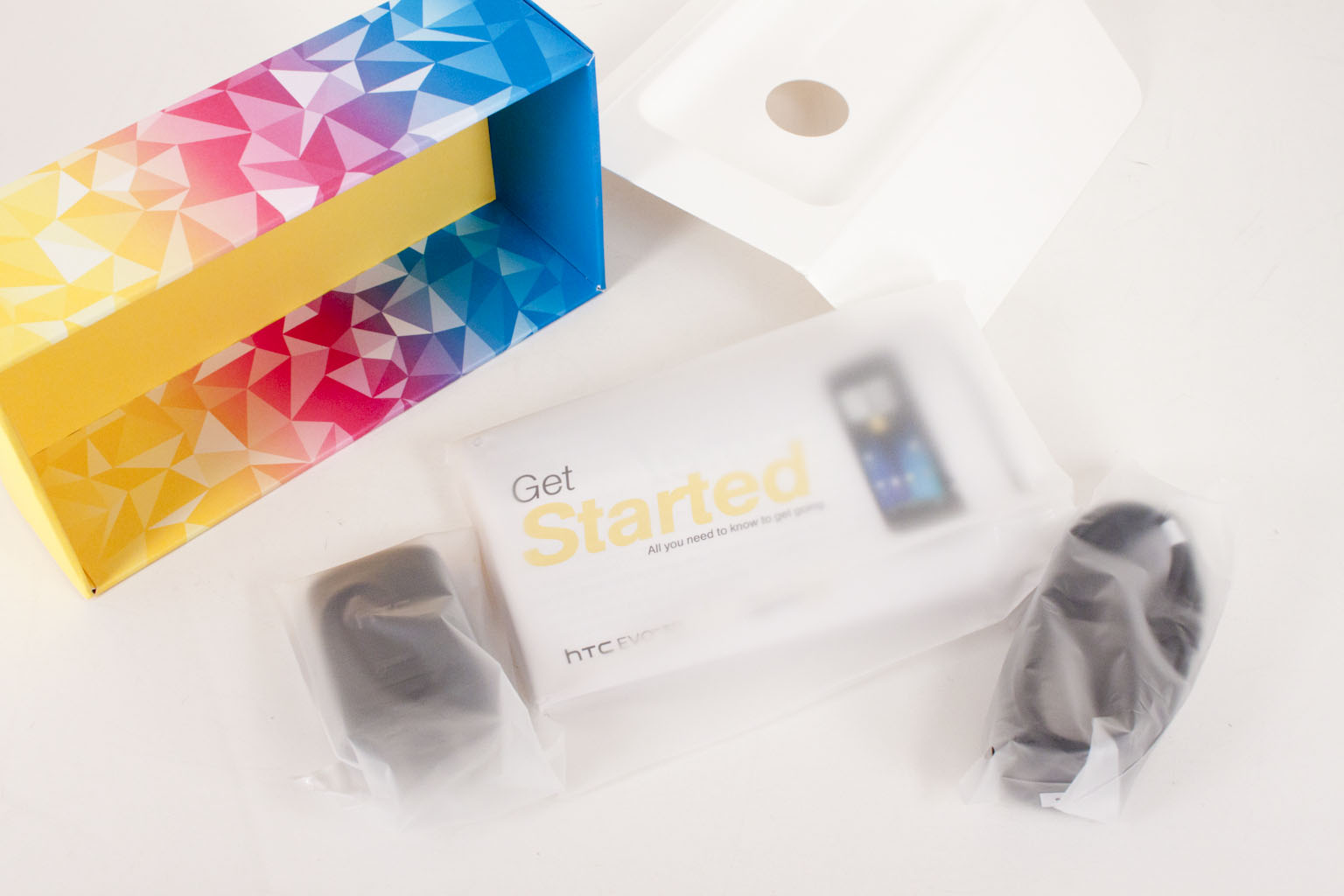 |
The EVO 3D -
The HTC EVO 3D is roughly the same size and shape as the original EVO, a little smaller maybe but not by much. They both have a 4.3-inch screen but the resolutions are a little different. While the EVO has a resolution of 800x480 the EVO 3D has a resolution of 960x540 not to mention the fact that it is a 3D display. But there are more distinctions than that. The EVO 3D also has a dual core 1.2GHz and 1GB of RAM. This more than doubles the processing power and memory of the original EVO at 1GHz (Single Core) and 512MB of RAM. For internal storage the EVO 3D kicks up to 4GB of space leaving the 1GB in the original EVO in the dust. For additional storage both come with an 8GB microSD.
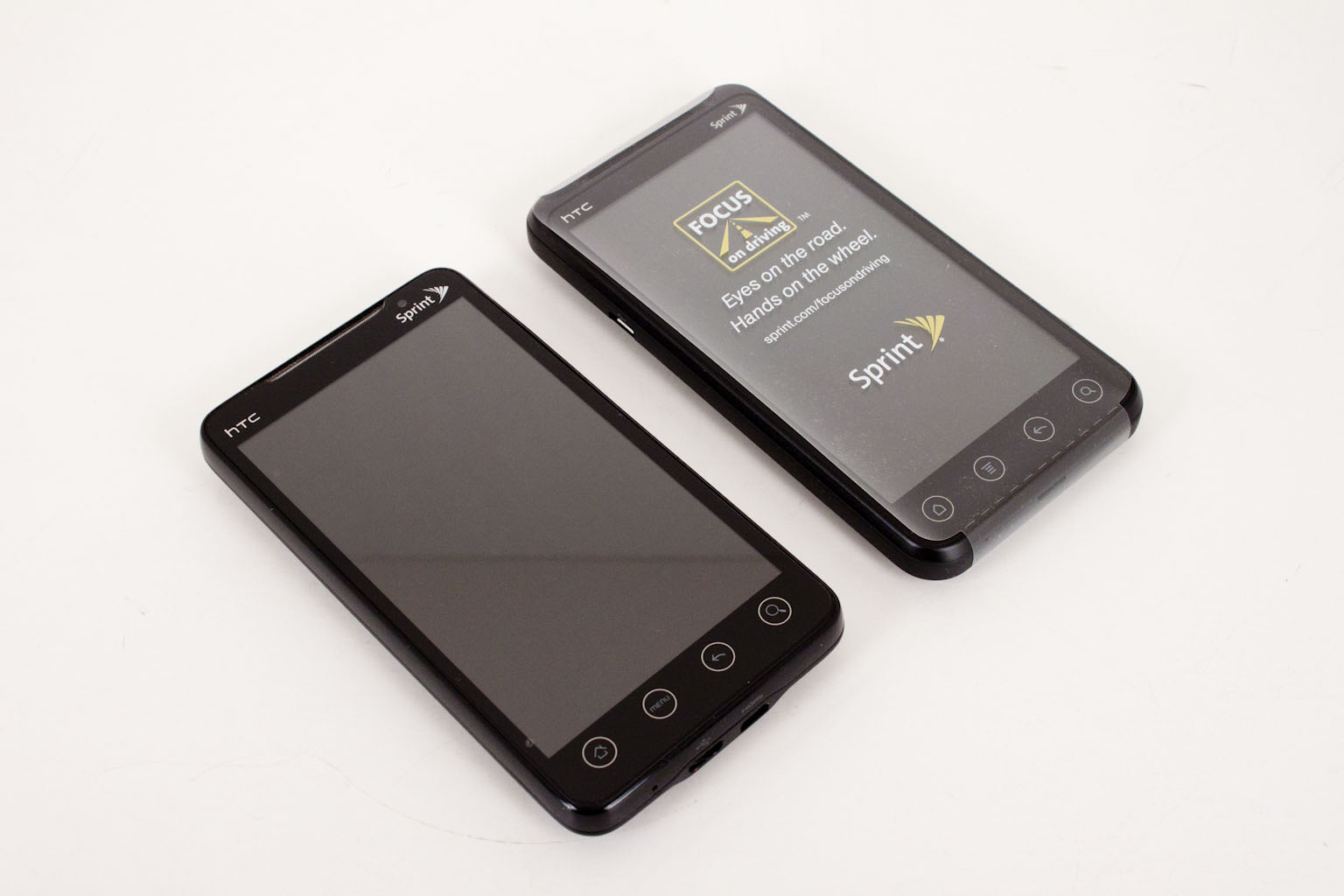 |
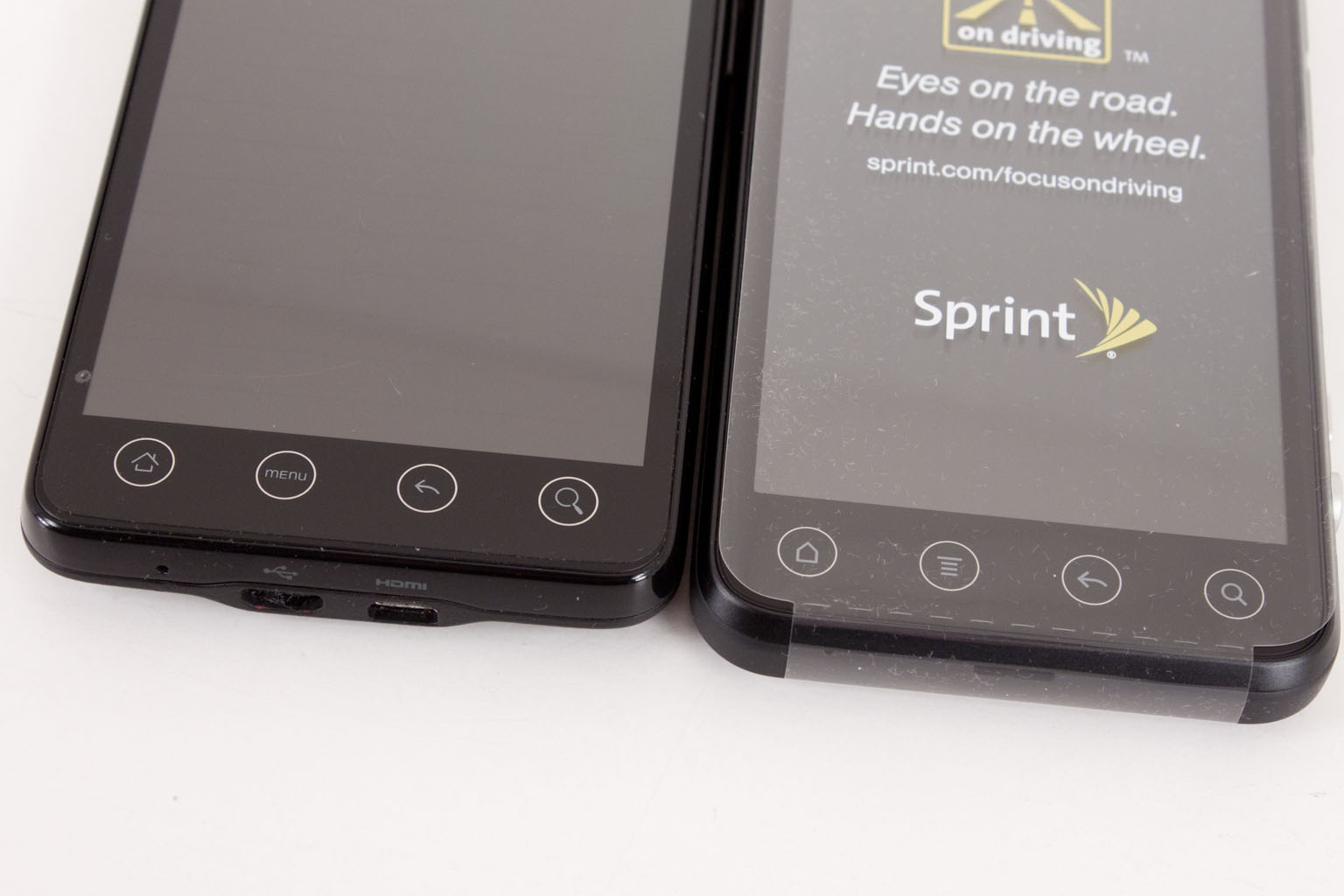 |
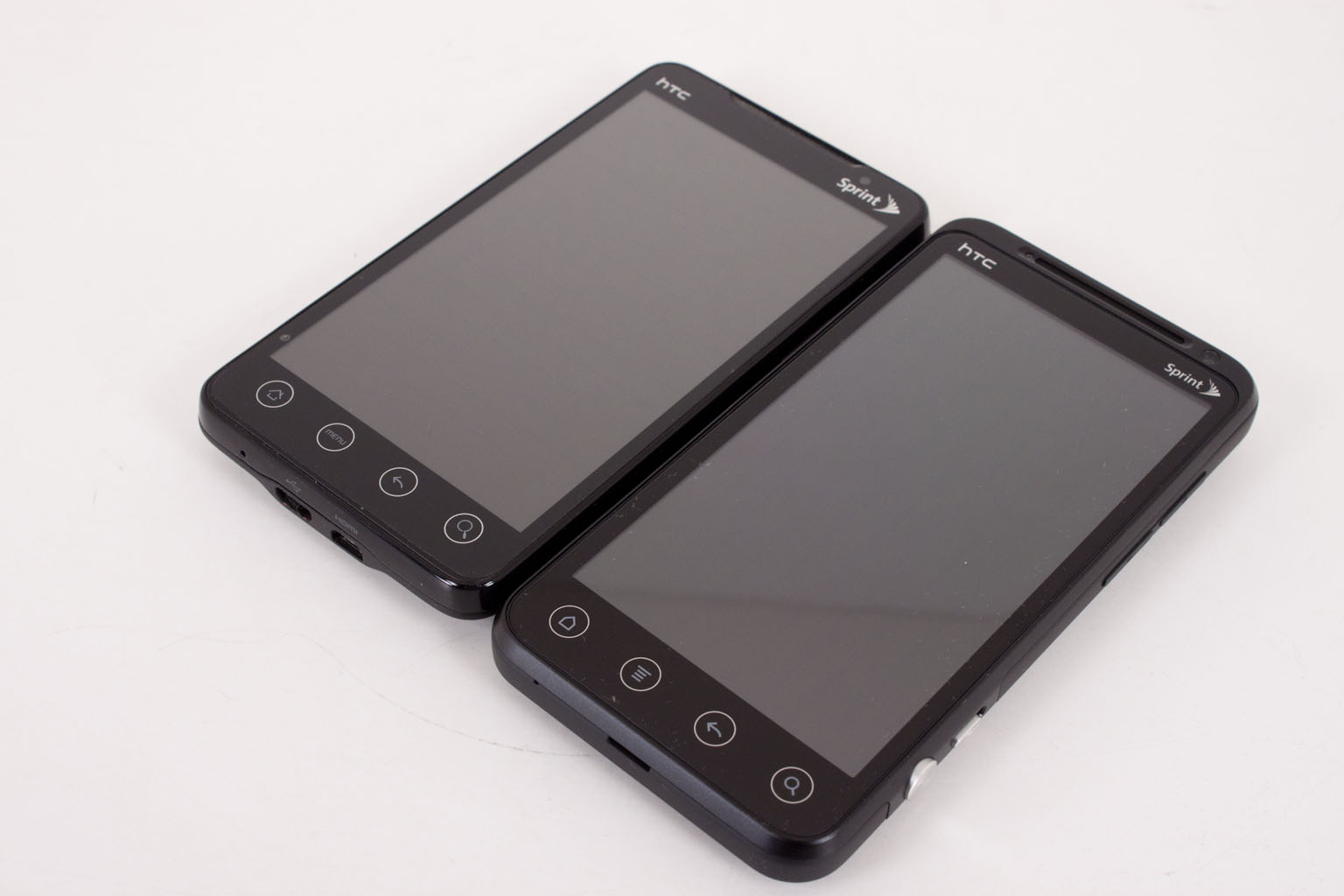 |
Both have front facing 1.3MP CMOS based cameras (for Qik Video Calling or any other video calling service you chose). Things get really different when you get around to the back camera. While the original EVO sports an 8MP camera on the back with full auto focus and a dual LED flash, the EVO 3D has dual 5MP CMOS based cameras that are capable of taking 3D still images and 3D Video. The reason there are two cameras is to allow for stereoscopic 3D imaging. Each camera captures and image independently of the other while the CPU and software compare these images (differences in angles and light reflection) to create a 3D image that is accurate to human eyes (which are also stereoscopic).
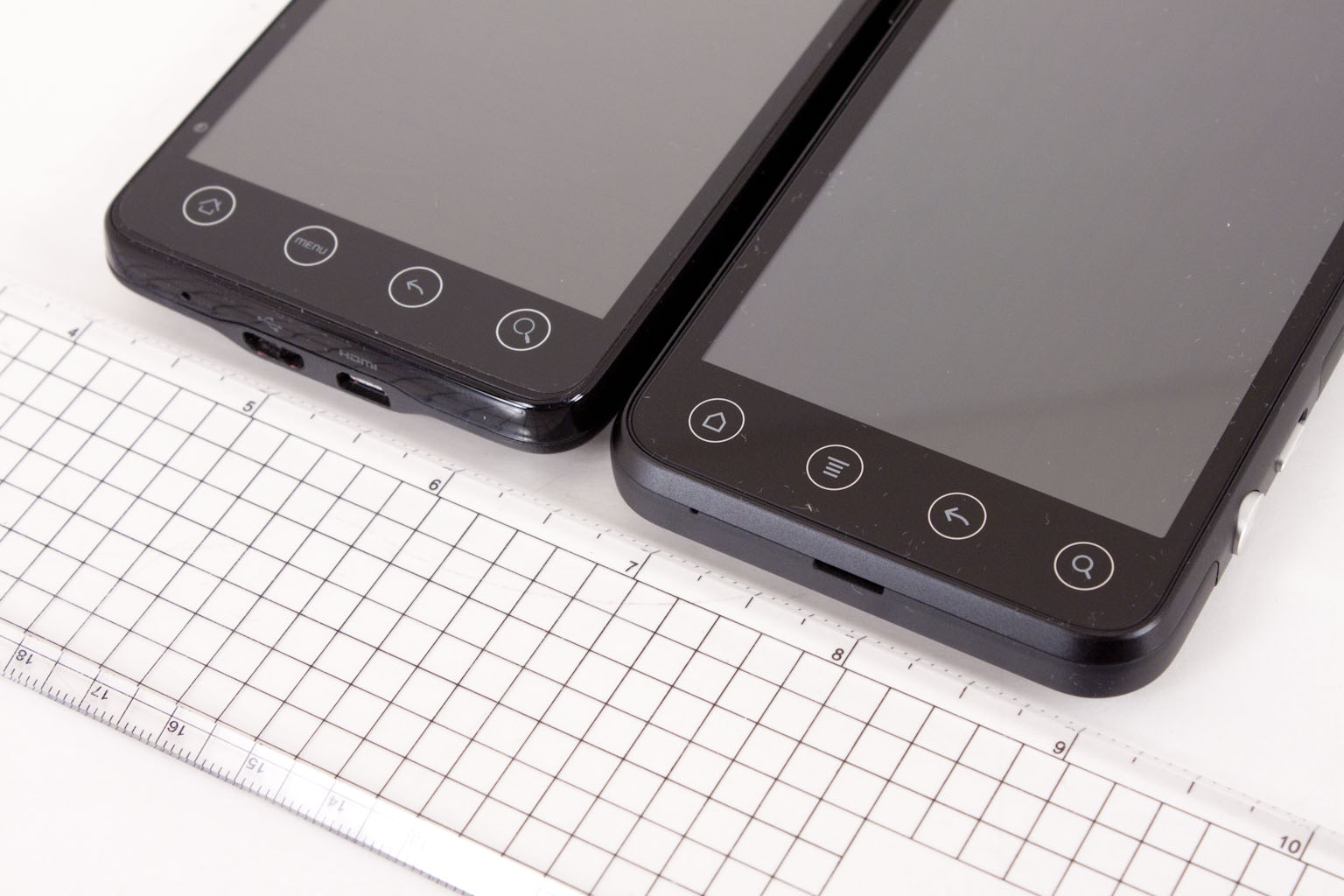 |
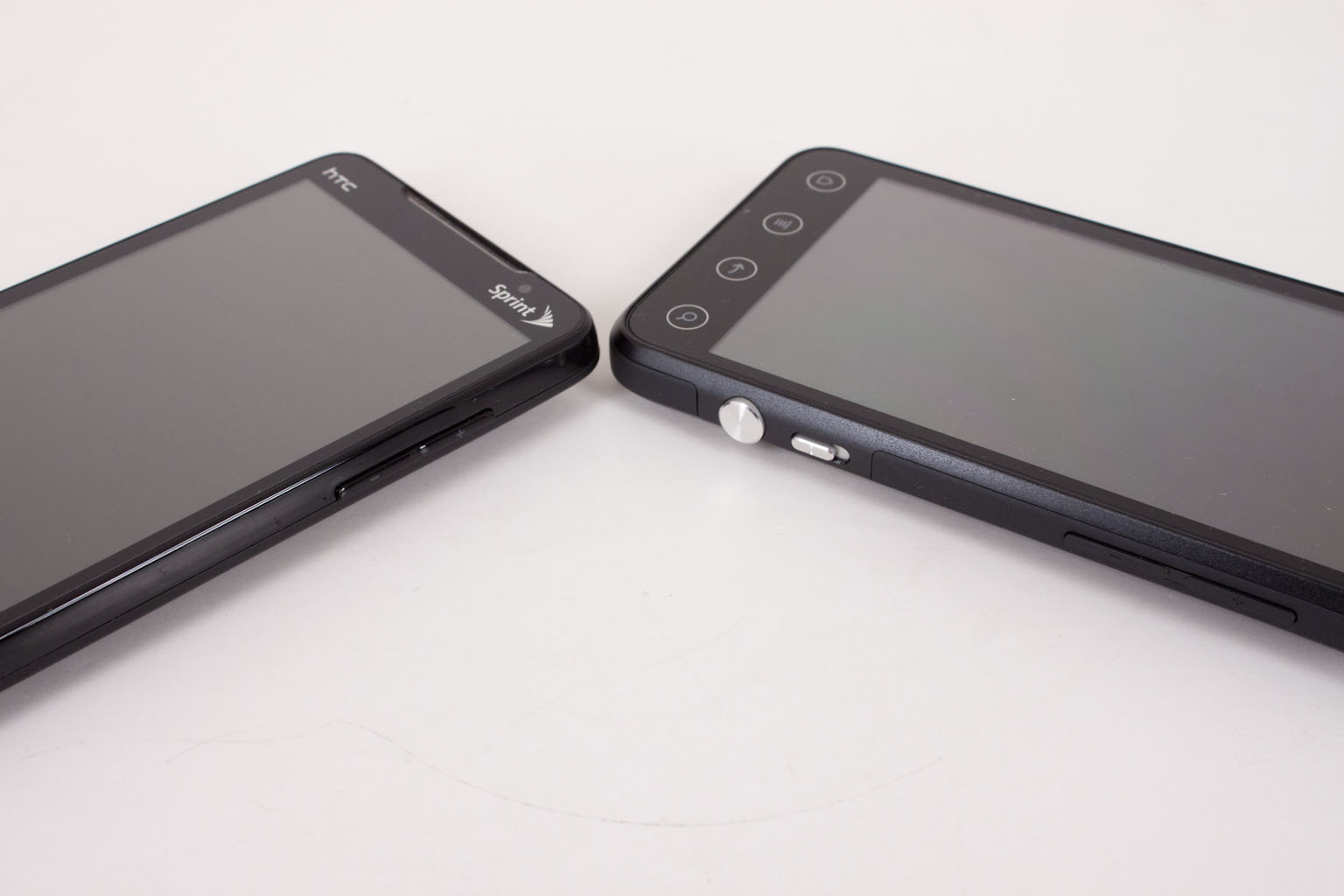 |
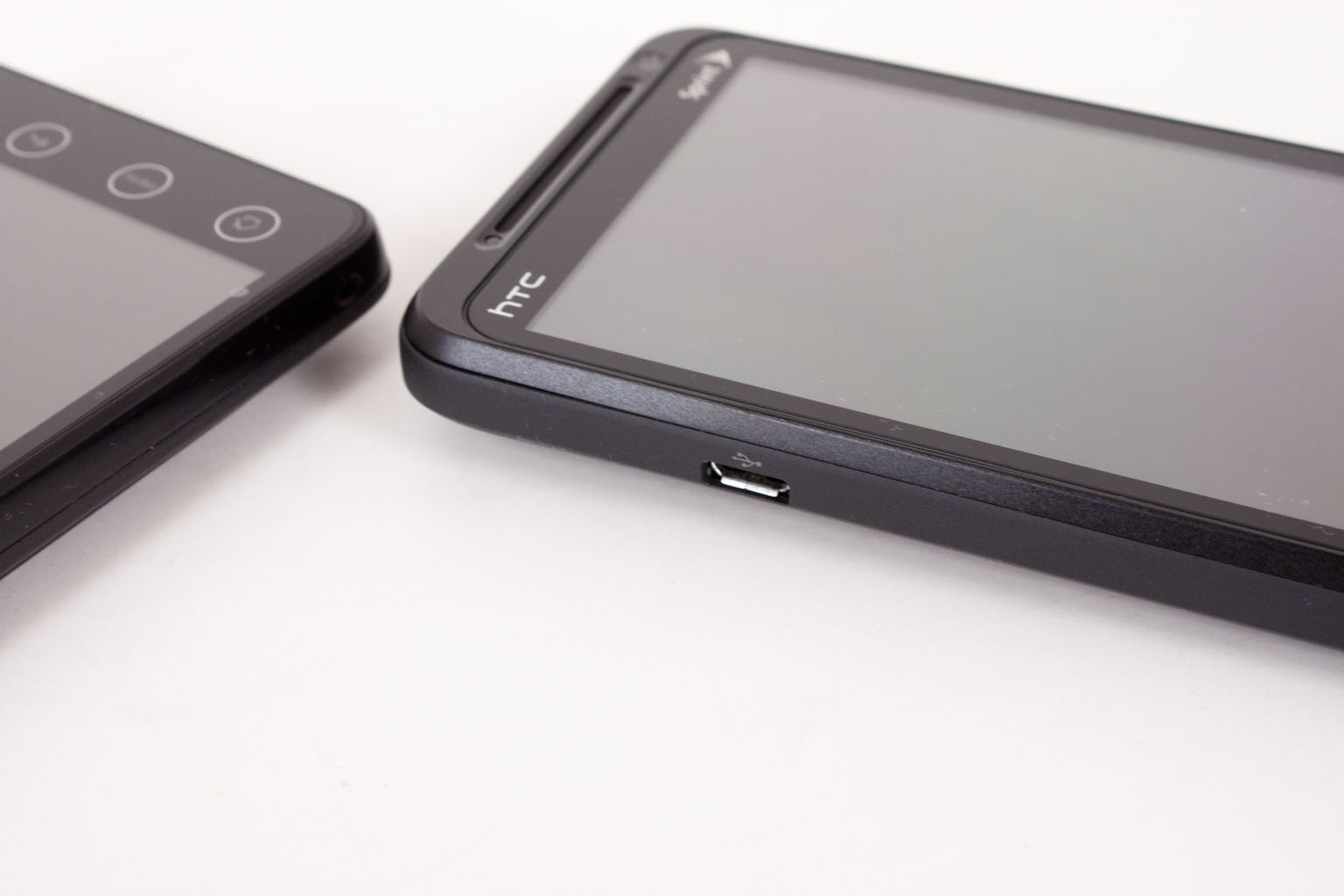 |
The EVO 3D weighs in at 6 ounces with the battery in just like its older brother. There are more differences to the EVO 3D than the cameras, CPU, RAM, and internal storage. On the EVO 3D HTC has decided to give you a “real” shutter button. This is right next to a switch that lets you change between 2D and 3D modes. HTC has also moved the miniUSB port from the bottom to the side and removed the miniHDMI port altogether. Due to the larger area needed for the camera the batter is also much smaller in size. But size does not always matter; the battery in the HTC EVO 3D is 1730mAh Vs the 1500mAh one that is in the EVO.
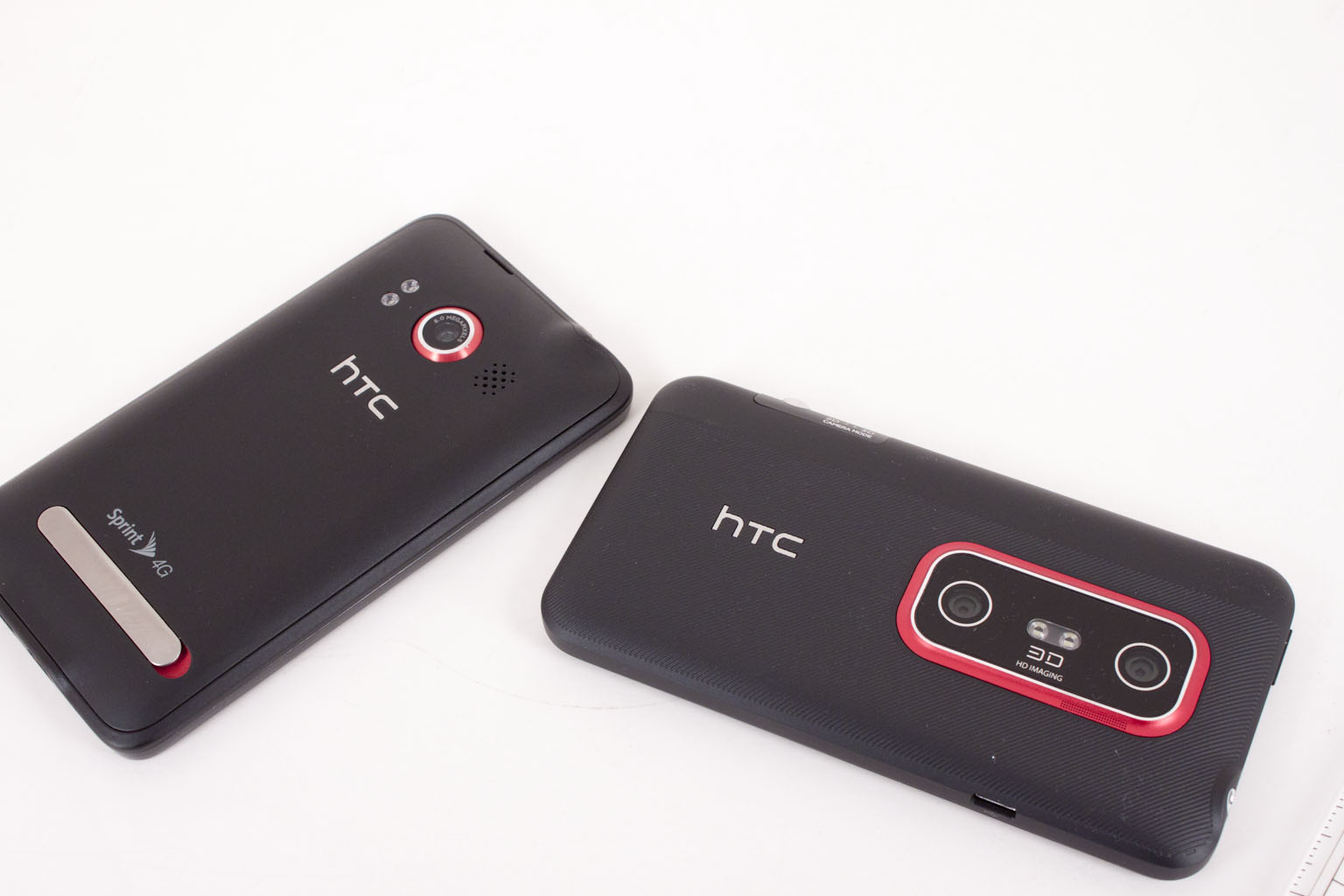 |
 |
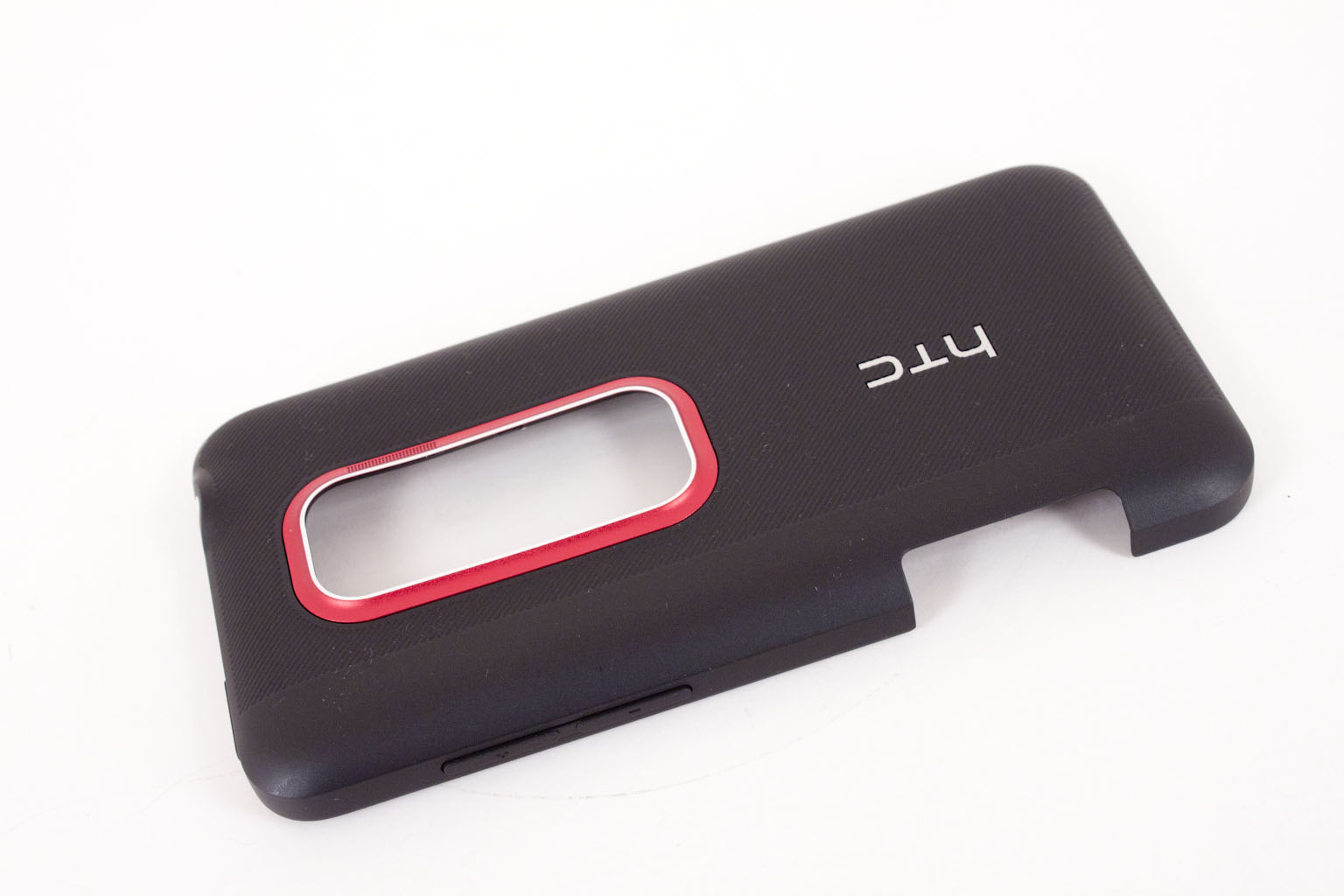 |
All in all the EVO 3D appears to be a much more powerful phone than the original EVO and that was (and still is) an impressive phone all on its own. Now I guess we will need to see if it really can outperform the EVO in some real world testing, but first let’s take a look at some of the features and extras you get when you buy the EVO 3D.
Features -
Ok here we are going to cover some fairly obvious things as well as some things that we found out later after playing around with the EVO 3D. Of course the biggest feature on this phone is the 3D. After all it is not called the EVO 3D just because it sounds cool. As we mentioned above the camera on the EVO 3D is a stereoscopic 3D camera/camcorder. It uses the dual lenses to create a stereoscopic 3D image for display. You have two options for saving these images; one is the .mpo file (the default) and the other is .jps. You also have the option to capture 3D video which is saved as .mp4 files. When you take your first 3D photograph you are going to be very impressed. Then you will notice that the colors are not quite right. The CMOS sensors used lean toward blue (well actually a lack of yellow and magenta). You can correct this a little by changing the white balance but really HTC or Sprint needs to come up with a fix for this. The good news is that this is a camera on a phone; because of this most of the processing uses a software layer that runs on the phone’s CPU. This means that someone else can write a camera application for the EVO 3D which corrects these problems if they chose to. We have posted a few samples on our forum for those of you with 3D Vision. *We would have liked to have posted screen shots of this but the EVO 3D does not come with a screen shot function and none of the non-root apps we found were any good*
Watch -
Watch is something new to me, it is an online video library that allows you to rent or buy movies right through your phone. To get you interested (and to help show off the power of the EVO 3D) they give you one free movie. This is the 3D version of the Green Hornet. While I found this Seth Rogan film entertaining, I have to say that it is a little on the cheap side considering some of the other (and much more impressive) 3D Movies they could have given.
Wireless Media Sharing -
Remember how we told you that there is no microHDMI port on the EVO 3D? Well you do not need one. The EVO 3D is capable of streaming media to any DLNA enabled TV or PC (which is a lot of them). You have to do this over your WiFi network. Of course you might have a few issues playing some of the video content directly from the phone. We found that the system takes a very long time to buffer content. To watch a single 2 minute video took a little over 3 minutes to buffer. I could not imagine trying to buffer a 2 hour movie.
Bluetooth transfer -
This is actually a very cool feature but might be of limited use. Theoretically it is supposed to connect to your phone Via Bluetooth and pull your contacts, calendar and some additional information. In practice it is a little more limited. I was actually very surprised that the only thing I was able to sync from my EVO was the contacts.
Video Calling -
The EVO 3D has a front mounted 1.3 MP camera that is ideal for video calling. To facilitate this Sprint has thrown in Qik as their software of choice. This is not bad software for the most part but if you do not have a VERY good signal you can look forward to choppy video and at times no video at all. There are other applications available from the Android Market but they all have this issue to one degree or another when you are stuck on 3G or are in an area of poor reception.
Other odds and ends -
There are other items about the EVO 3D that make it stand out but none are really features (at least not the way we think about it). As it is a Sprint phone you get the usual Sprint shovelware (Sprint Zone, Sprint TV, Sprint Radio, NASCAR etc). You also get a few HTC add-ins like HTC Hub and HTC like. HTC also preloaded a single 3D game, sort of, you get the demo of Spiderman 3D. To get the full game you are going to have to shell out $4.99. These are nice little extras but nothing that is really going to make or break the deal.
Performance -
The HTC EVO 3D is very fast. The Dual Core CPU inside the skin does a great job of running things. We had no issues with applications launching even bulky ones like Skype or Qik were very snappy (with the exception of some poor video performance. We also had no issues loading up images of video files that were saved directly to the EVO 3D. Browsing was also good using the built in browser although I must say that I miss using the Atomic Browser from my days with the iPhone. Still there is one item that I have with almost any Android phone and that is the fact that I can view flash video live in my browser without needing to use a translation service.
Moving on to Audio quality and performance we found the call quality to be a little off when we first started working with the EVO 3D. The volume in just about all calls would fluctuate making it difficult to understand the person on the other end. No one that we spoke to reported issues with the quality of our speech. Most said that the phone sounded clean and clear. Just to be on the safe side we ran a firmware and a PRI update which seemed to clear some of this up, but occasionally we still encounter this issue. The multi-media audio quality was excellent; whether we were watching movies using the Watch App or viewing a movie that was saved onto the miniSD card we found the audio easy to hear and understand. There is even an SRS option that helps to add some depth to the audio. We had no issues listening to music or audio books using the EVO 3D.
Video performance was good with a few exceptions. One of the problems that I had was that the video would flicker and turn off while viewing 3D pictures or movies. This at first appeared to be tied to the screen time out but we still ran into this with the screen time out set to never. As is stands right now we do not have a real answer to why this is happening. It is very interesting to note that when this did happen and we went to log back into the phone we could see that the 3D Display was still active. The second layer was clearly visible as an iridescent glow under the keypad. This is something that HTC and or Sprint will want to fix pretty soon.
Battery Life -
Battery life is one of the reasons we were not one of the first to release our review of this product. You see the batteries that are shipped with these products were not fully charged from the factory. As such when you charge it up the first time you are also not charging the phone all the way. When we first ran our EVO 3D with what we thought was a full charge we got about 6 hours out of it. That is simply terrible. Then we followed a recommendation we found on a couple of sites. We fully charged and discharged our phone five times. This meant from 100% down to the phone shutting itself off and then trying to power it on until we got nothing (the charging all over again). After this was done we found that we could get between 12-16 hours depending on the usage and signal strength. Obviously things like 3D video, gaming, or using the camera in 3D drained the battery much faster, but still we were much happier with this battery life than we were with the EVO. We have to note that 12-16 hours is still much less than many other devices on the market right now, but it is an improvement.
Value -
Value is another very subjective topic. What is expensive to some might be a deal to others. You can look at this topic in multiple ways. One is raw price and the other is what you get for the money. Each is accurate and both are correct ways to look at price/value. We tend to look at features, performance and real-property when we discuss value. However, we also take into account the raw cash cost of the item.
If you are buying the EVO 3D outright then you are going to drop around $500 on this phone. That is a huge chunk of change. Fortunately the wireless providers heavily subsidize the phones and with a new activation you can get this for as little as $199. We were able to pick our up as an upgrade for this same price which is not that bad at all when you do a feature for feature comparison (and this has some features that no other phones have). Of course to get this you have to commit to a new two year agreement, but hey when you can get unlimited data and voice for only $99.99 the deal gets even better. I have to say that even with the minor issues we ran into we feel that $199.99 for this phone is a good deal.
Conclusion -
The EVO 3D is a big step up from our EVO (which we were happy with). Even without the 3D (which is a major selling feature) the EVO 3D is a very fast phone with lots going for it. The multi-media playback is excellent, the video quality is great, and if you have 4G (with good signal) in your area you are golden. This is not to say that the EVO 3D was or is all beer and pizza. We did run into a few issues; 3D display powering off, audio quality on during calls and so-so battery life. However, as Android phones go it is an excellent phone. If you are a Sprint user then you might want to see about an upgrade. If you are not, well then you might want to change your carrier so you get one.
Talk about this one and view the 3D samples on our forum



